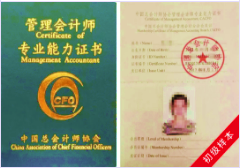金本位制The Gold Standard
The major trading nations, primarily the British Commonwealth countries and the United States, entered into the first so-called international monetary system--the gold standard. The society of international trading nations practiced the gold standard from about 1880 to 1914. A majority of countries used this system to settle their international transactions balances. Gold standard currencies were valued in terms of a gold equivalent. For example, one ounce of gold was valued at U.S.$20.67 and all other currencies were linked to the dollar in a system of fixed exchange rates. Thus, the gold standard resulted in a system of fixed exchange rates among participating nations. Such stable exchange rates were considered a necessity to increasing trade among gold standard nations.
主要贸易国家,首先是英联邦国家和美国,开始实施所谓的国际货币体系——金本位制。国际贸易国家组织大约在1880-1914年期间实行金本位制。大多数国家利用这一制度安排其国际贸易差额的支付结算。金本位货币以含金量表示其价值。例如,一盎司黄金值20.67美元,所有其他货币按固定汇率与美元挂钩。因此,金本位制导致各参与国之间形成固定汇率制。这种稳定的汇率被认为是实行金本位制的国家增加贸易所必须的。
The quantity theory of money was the foundation of the gold standard. It is expressed in the equation MV = PQ, where M is the money stock, V is the velocity of that money stock circulating in the economy, P is the price of goods, and Q is the quantity of goods produced by the economy. In a gold standard economy, if the country had deficit in trade with the rest of the world, the result would be an outflow of gold to settle the deficit. This would cause M to fall and, thus, P would fall. The decline in prices would make the country’s exports less expensive to the rest of the world and they would increase. The resulting surplus would cause an inflow of gold, M would increase, P would increase, exports would fall, and the cycle would continue from disequilibrium to equilibrium to disequilibrium, and so forth.
货币数量学说①是金本位制的基础理论。它可以用MV=PQ等式表示,其中M是货币储备,V是货币存量在经济中流通的速度,P是商品的价格,Q是经济中生产出来的商品数量。在金本位制经济中,如果该国与世界上其他国家进行贸易时发生逆差,结果是黄金流出以抵补逆差。这会引起M下降,从而,P也会下降。价格下降会使该国的出口商品比世界其他地方便宜,出口增加。由此产生的顺差会引起黄金的流入,M增加,P也会增加,出口下降,出现从不平衡到平衡,从平衡到不平衡依次周转,循环往复。
A number of problems emerged with the gold standard. This monetary system assumed that the major settling currencies, namely the pound sterling and the dollar were backed by gold. Gold is a finite commodity. Its supply is limited, but international trade had expanded after the Industrial Revolution. Although the period was one of stability and growth -- a major argument espoused by those who advocate a return to the gold standard, this environment may have been more a result of the absence of war or serious global economic shocks, although the recession at the beginning of the twentieth century was quite severe in the United States.
伴随金本位制出现许多问题。这一货币制度假设,主要结算货币,即英镑和美元由黄金支撑。黄金是一种有限的商品,其供应量是有限的,但工业革命后国际贸易扩大。虽然该时期是稳定增长的时期之一—由那些鼓吹重返金本位制的人提出的一个主要问题是,这一环境更多地是由于没有战争,或者说没有严重的全球性经济震荡的结果,虽然在二十世纪初在美国发生了严重衰退。
World War I caused a severe shock to the system and the United States and Great Britain went off the gold standard. The former returned to the gold standard in 1919 and became even more prominent in world trade than Great Britain. Inflation in Europe, especially in Germany, during the 1920s prohibited restoration of the gold standard because differential inflation among the world’s trading nations made it difficult to determine appropriate exchange rates. Finally, the United States went off the standard in 1933 as the Great Depression and the retaliation against the Smoot-Hawley Tariff, enacted by the U.S. government, led to a virtual halt in global trade. The depression resulted in a severe contraction of international trade and investment. Nations allowed their currencies to depreciate as a means to solve their international balance of payments deficits, and this movement led to global currency instability, further eroding the usefulness of the gold standard.
第一次世界大战是对该制度的一次严重打击,美国和大不列颠放弃金本位制。美国于1919年重返金本位制,在世界贸易中其作用超过英国。欧洲的通货膨胀,尤其是发生在二十世纪二十年代期间的德国通货膨胀,阻碍其恢复金本位制,因为世界贸易国之间不同程度的通货膨胀,使其决定适当的汇率困难重重。最终,由于美国在1933年发生大萧条,放弃了金本位制;美国政府颁布了针对Smoot-Hawley关税的报复性关税,导致全球贸易的一度中断。大萧条使国际贸易与投资极度萎缩。各国任其货币贬值,作为解决其国际收支逆差的手段,这一趋势导致全球货币不稳定,进一步削弱了金本位制的有效性。
注①货币数量学说是指物价随货币流通量之多寡而升降的理论。
课程推荐
- 中级会计职称普通班
- 中级会计职称特色班
- 中级会计职称精品班
- 中级会计职称实验班
| 课程班次 | 课程介绍 | 价格 | 购买 |
|---|---|---|---|
| 普通班 | 班次特色 |
240元/一门 450元/两门 680元/三门 |
购买 |
| 课程班次 | 课程介绍 | 价格 | 购买 |
|---|---|---|---|
| 精品班 | 班次特色 |
680元/一门 1200元/两门 1800元/三门 |
购买 |
- 中级会计职称机考模拟系统综合版
- 中级会计职称机考模拟系统实验版
| 模拟题库 | 题库介绍 | 价格 | 购买 |
|---|---|---|---|
综合版 |
题库特色 |
120元/一门 200元/两门 240元/三门 |
购买 |
| 模拟题库 | 题库介绍 | 价格 | 购买 |
|---|---|---|---|
| 实验版 | 题库特色 |
240元/一门 480元/两门 720元/三门 |
购买 |
最新新闻
网站地图
专业知识水平考试:
考试内容以管理会计师(中级)教材:
《风险管理》、
《绩效管理》、
《决策分析》、
《责任会计》为主,此外还包括:
管理会计职业道德、
《中国总会计师(CFO)能力框架》和
《中国管理会计职业能力框架》
能力水平考试:
包括简答题、考试案例指导及问答和管理会计案例撰写。
- 管理会计师PCMA 免费试听
- 中级管理会计师 免费试听
- 税务管理师 免费试听
- 智能财务师 免费试听
- 国际注册会计师 免费试听
- 国际财务管理师 免费试听
- 初级会计职称考试 免费试听
- 中级会计职称考试 免费试听
- 注册会计师考试 免费试听
- 全国外贸会计考试 免费试听
- 会计实务操作 免费试听
- 管理会计师 免费试听
-
初级会计职称招生方案
·特色班
·精品班
·实验班

初级会计职称网上辅导 -
中级会计职称招生方案
·普通班
·特色班
·精品班

中级会计职称网上辅导
专业知识水平考试:
考试内容以管理会计师(中级)教材:
《风险管理》、
《绩效管理》、
《决策分析》、
《责任会计》为主,此外还包括:
管理会计职业道德、
《中国总会计师(CFO)能力框架》和
《中国管理会计职业能力框架》
能力水平考试:
包括简答题、考试案例指导及问答和管理会计案例撰写。

 您现在的位置:
您现在的位置:




